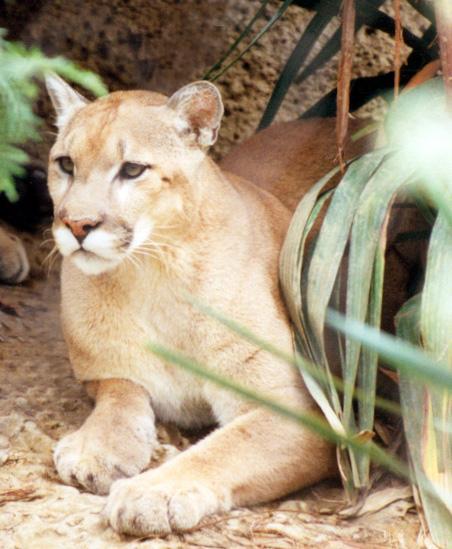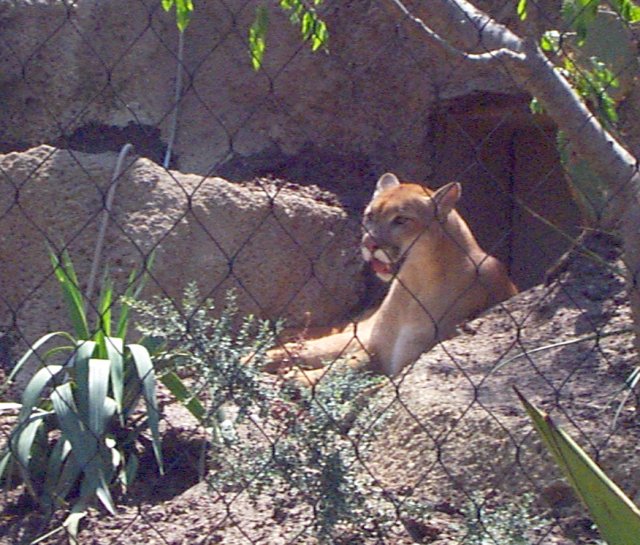Cougar or
Mountain Lion
Felis concolor
 Photo courtesy of Cathy Hughes |
Name: Cougar |
| Scientific name: Felis concolor | |
| Range: Widespread over North and South America, except the Arctic | |
| Habitat: Mountains and plains | |
| Status: Not threatened | |
| Diet in the wild: deer, sheep, goats, and other same sized game | |
| Diet in the zoo: carnivore diet | |
| Location in the zoo: Texas Wild! Brush Country Exhibit |
Physical description:
|
| General information:
The cougar is found in most parts of the North
and South America except the arctic. Its population is now dwindling and
even vanishing in places where it used to be abundant. It is very territorial
and solitary, avoiding even its own kind except to mate. Its prey are usually
deer, sheep, goats, and other similarly sized game.
Social lives of the cougar: The cougar or mountain lion lives a very solitary existence. Mountain lions are only not alone when a mother has cubs and during mating season. The mountain lion not only avoid its own kind, but human contact. Yet, the more we humans take away the land, the more humans and mountain lions will come into contact with each other. When contact is made mountain lions are known not to be aggressive and will run unless cornered or surrounded. Mountain lion litters usually have 2 to 3 cubs. The cubs are blind at birth and are very vulnerable. This weakness of the cubs makes the adult mountain lion a fierce defender of its young. This fierce defense is not only against other species of animals but its own too. In fact, more mountain lions are killed by each other, than by other animals or humans. |
| Personal Observations:
The mountain lions when I first arrived had not been let out for viewing. Finally, as I was about to depart the mountain lions were let out into the viewing area. When let out the male went straight for the front of the cage and the female stood in the back of the cage away from everyone. The male was very aggressive and paced back in forth in front of the cage while the female was very docile and shy. I am not sure if this is always the behavior of mountain lion's in the wild or not, but in caged environment this is what was observed.. |
| Source Materials and Related Links: |
 Bryan
Boyd Bryan
Boyd
Send E-mail to: bboyd3434@aol.com or to mac@whozoo.org |
